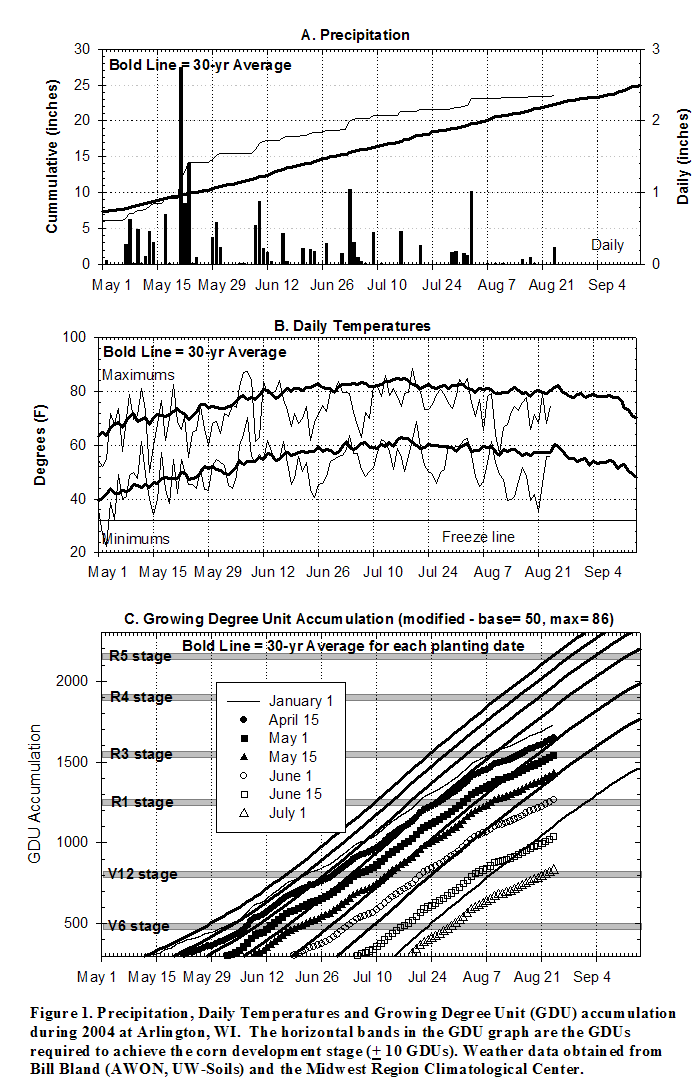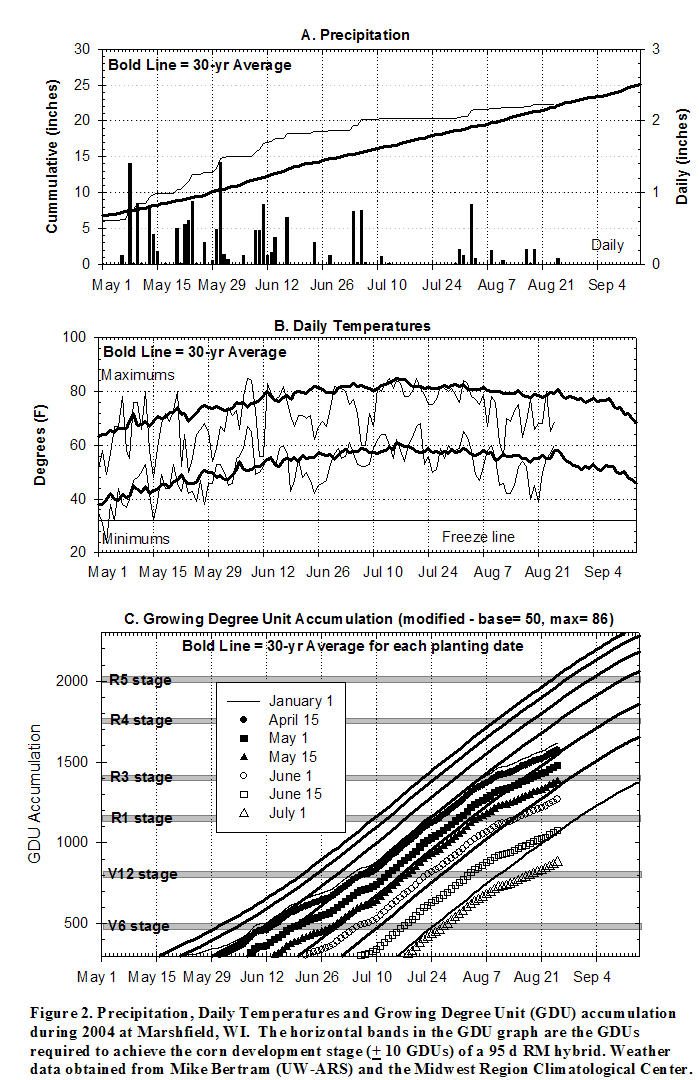
"Denting by Labor Day" – An Important Benchmark
Joe Lauer , Corn Agronomist
The next benchmark to watch for in corn development is "Denting by Labor Day." Most
farmers feel that if their corn crop can start denting by Labor Day, the crop should
mature before a killing frost. Unfortunately many areas of the state will not make
this benchmark during 2004. Temperatures continue to be unseasonably cool.
The 2004 growing season at Arlington from May 1 to August 24 is 160 GDUs behind
the coolest season on record for the last 30 years (Figure 1). GDU accumulation
so far is 1543 GDUs. The second coolest year for this period is 1997 which had accumulated
1703 GDUs. Normally we accumulate 1975 GUDs by August 24. Since we usually only
accumulate about 18 GDUs per day at this time, it means we are about 24 days ([1975-1543]/18)
behind the 30-yr normal.
The 2004 growing season at Marshfield from May 1 to August 24 is the second coolest
in the last 30 years. GDU accumulation so far is 1476 GDUs (Figure 2). The coolest
year for this period is 1992 which had accumulated 1342 GDUs. Normally we accumulate
1844 GUDs by August 24. Since we usually only accumulate about 16 GDUs per day at
this time, it means we are about 23 days ([1844-1476]/16) behind the 30-yr normal.
Some are concerned about the numerous cool nights that have occurred and the impact
on corn leaf photosynthesis. Research by University of Guelph (Ontario) shows that
photosynthesis and grain filling rate can be reduced up to 50% when temperature
falls to 35 F. However, when higher temperature conditions are resumed, plant activities
are at similar rates to those that never experienced low temperatures. If corn fields
can escape any serious frost damage during cold nights, grain filling should carry
on once normal temperatures return.

